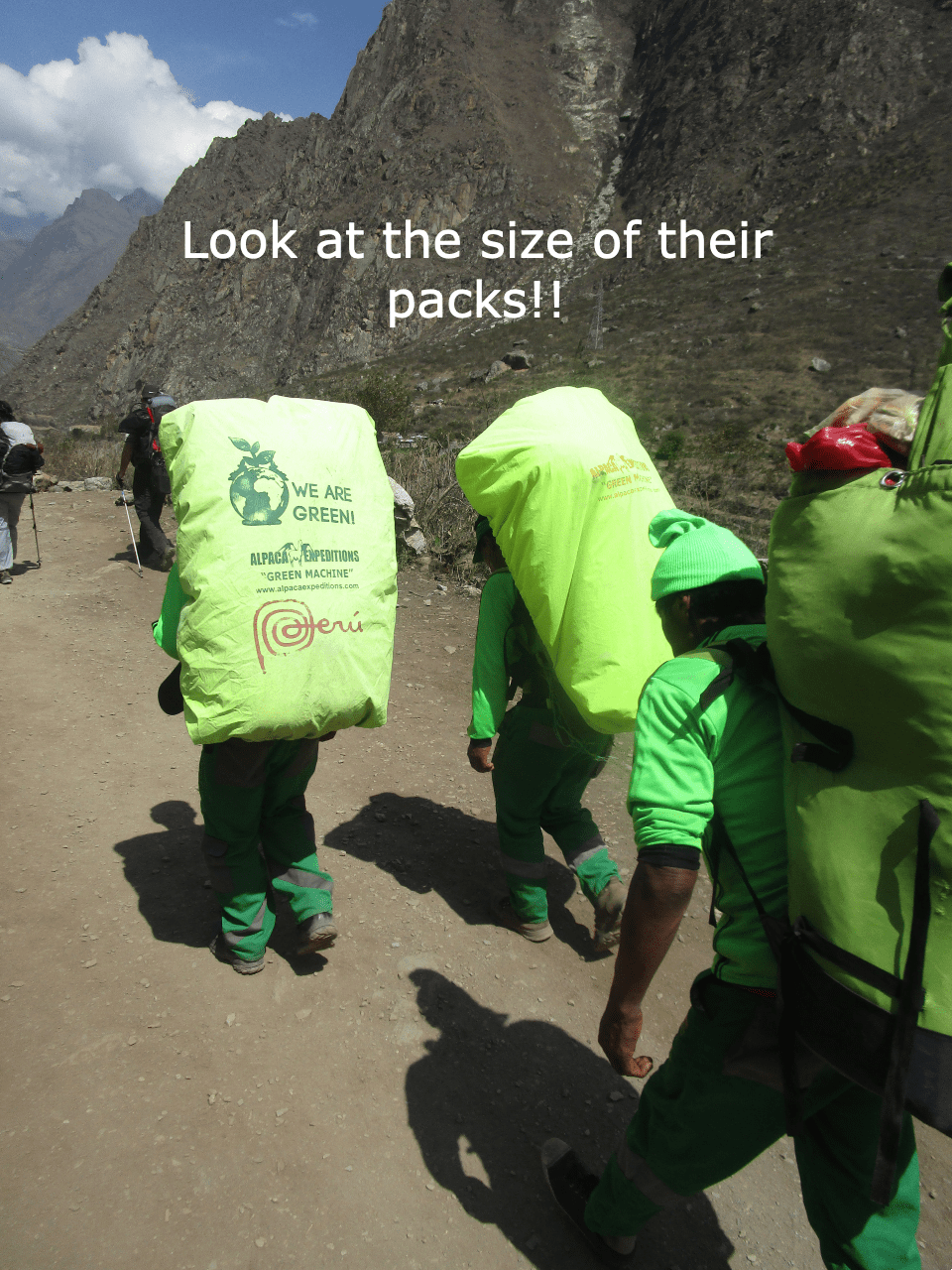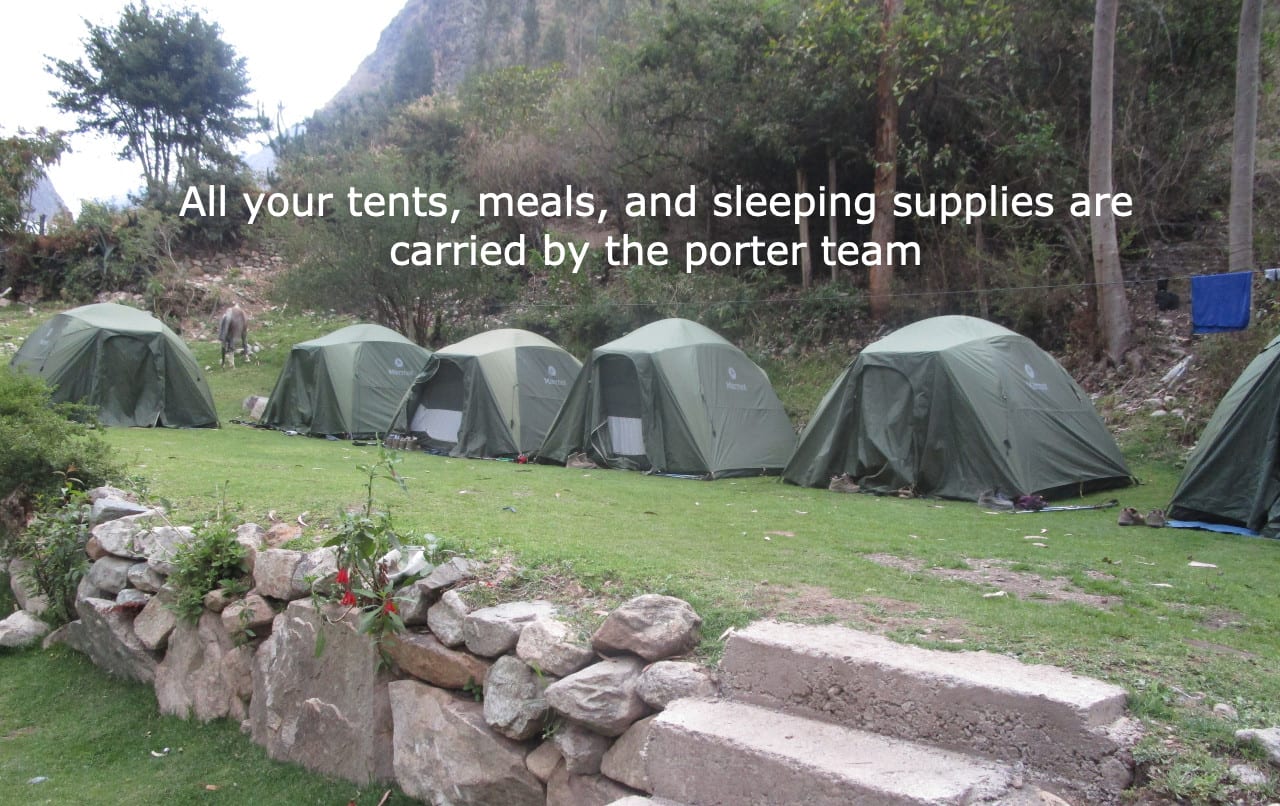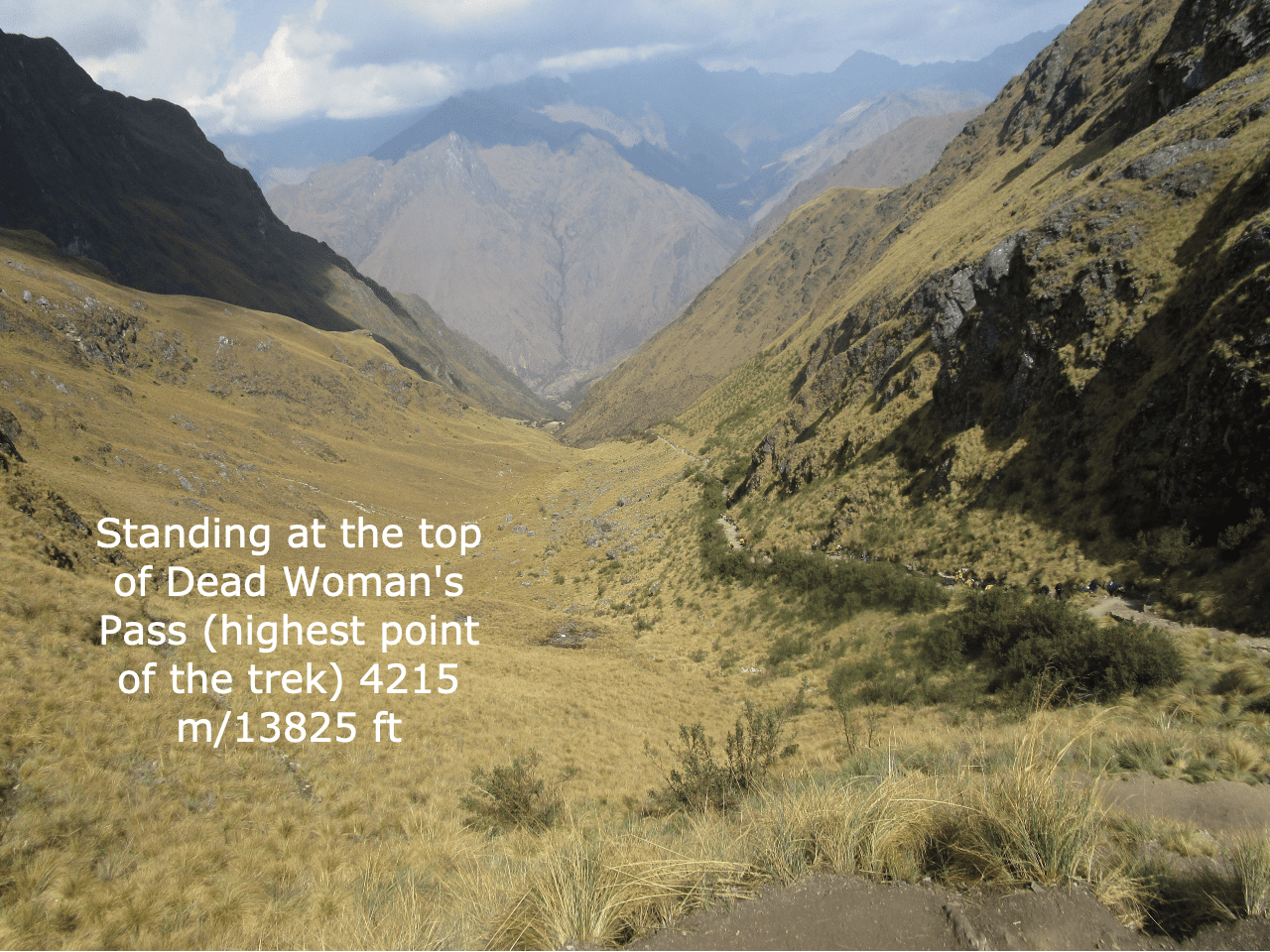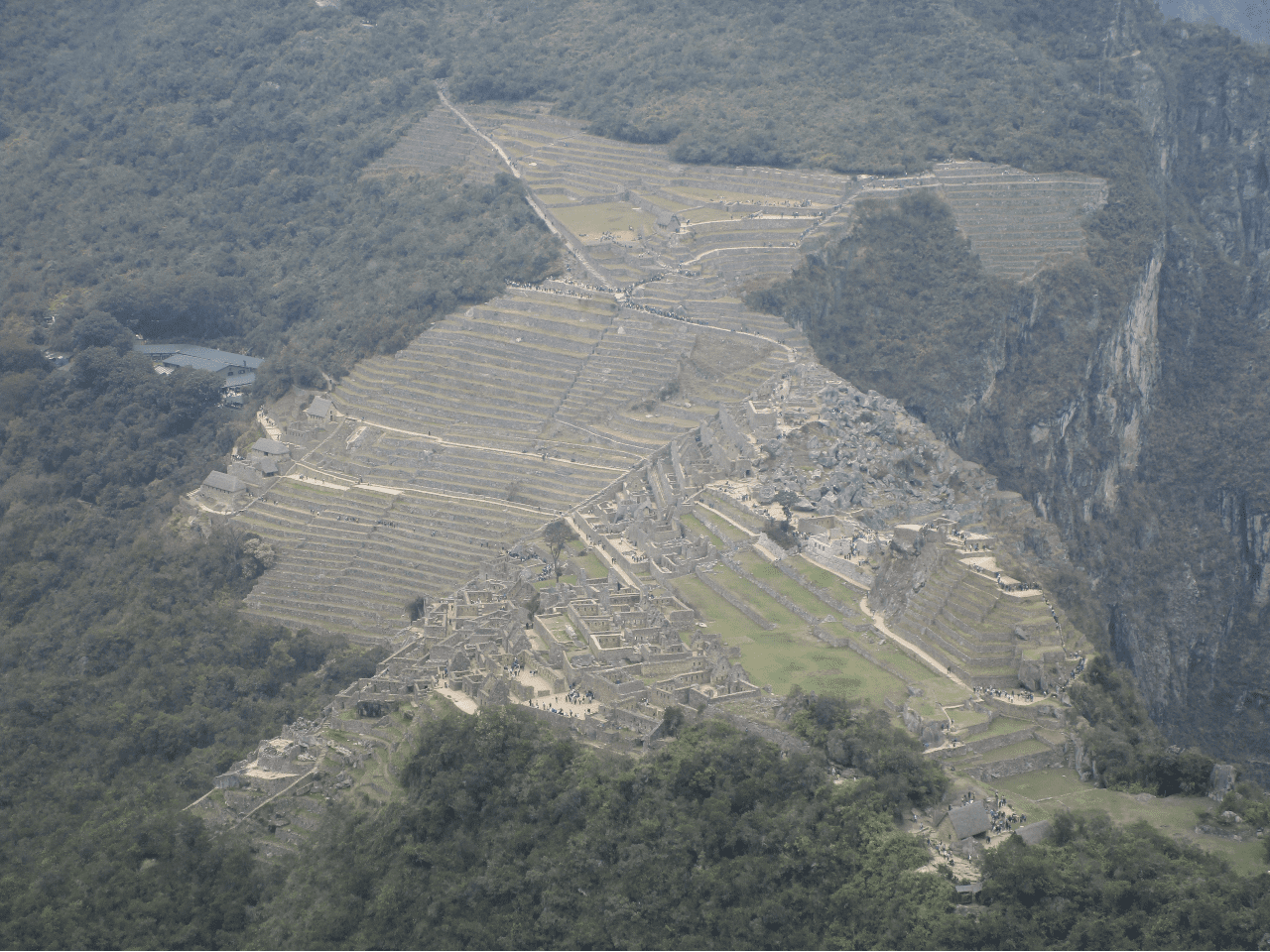There are thousands of people who have written about their Machu Picchu Hike experiences. I’m sure much of what is written is truthful, while some, probably not.
We at Prep4Travel are not here to lead you astray. We completed the Inca Trail Hike, and have put together 10 questions for you to ask and us to answer.
What we really want for you to get out of this article, is a good solid starting point. A helping hand with the decision making process. Our research and advice is from personal experience.
We imagine you will have the same reactions to much of the experiences we did. Our goal is for you to be prepared as possible, leaving the stress and worry behind. Your main focus should be to concentrate an enjoy the adventure that lies ahead.

1) What does the Classic Inca Trail Hike cost?
2) How long is the Inca Trail Hike (both in miles and hiking days)?
3) What is the best time of year to go?
4) How difficult is the trek?
5) What to pack?
6) What to expect?
7) What level of fitness is required?
8) What if I get altitude sickness?
9) Who should you book through?
10) Is it worth it?
1) What does the Classic Inca Trail hike cost?
You will hear the term ‘Classic Inca Trail Hike’ quite often. It simply means this is a 4 day, 3 night trek to get from Ollantaytambo, to Machu Picchu City.
$700 is a good ball park # to start with. While this might seem pricey, you will be getting quite a bit included in this cost. This price will vary upon shorter or longer treks, add ons, and tour operators. But at this price point you will be getting good value for your money. This is what to look for in the cost of the trek:
– pickup at Alejandro Velasco Astete Airport upon arrival to Cusco
– 1-2 nights in a recommended hotel by your tour operator prior to the trek
– transportation to the start of the trek (likely by bus with other trekkers)
– a guide and a team of porters for the entire trek (unless you pay for a private trek, you will be in a group)
– 3 meals a day while the trek lasts
– lodging each night while the trek lasts (this will likely be a tent, so we use the term lodging loosely)
– all hiking permits needed, including entrance to Machu Picchu
– transportation back to Cusco once you complete your trek (train/bus/car)
– 1-2 nights in a recommended hotel before departing Cusco
– transportation to the airport day of your departure flight
Remember, international flights are extra. Tours in Cusco are extra. Food and shopping pre and post trek are extra. Tipping your guide and team of Porters is highly recommended. You won’t believe how much stuff they have to carry throughout this trek.


2) How long is the Inca Trail Hike?
Total hiking distance is 26 miles (or 42 km). If this distance doesn’t sound like much, please keep in mind that day 2 of this Machu Picchu Trail hike, you are ascending over 1200 meters (3937 ft) in one day. It’s essentially 6 hours on a stair master. Fortunately there is plenty of time to stop, collect your breathe, and take some phenomenal pictures.

3) What is the best time of year to go?
May or October are our recommendations. May is after the Feb/March wet season, but before the Peruvian winter season beings. October is before the heat of their spring/summer and the start of their second rainy season. We did the trek in October and had only about 2 hours of rain on day 3.
Remember, Peru is in the Southern Hemisphere, so seasons are opposite to the Northern Hemisphere.
Please keep in mind the Peruvian government limits the amount of trekking permits issued per day for the Inca Trail hike.
This is beneficial in the sense you will not be overwhelmed with thousands of other trekkers, yet makes it more challenging to get the exact hiking date you want. Permits sell out somewhat quickly.
We recommend you book well in advance to secure the specific date you would like (6-8 months in advance should secure the dates your looking for).
4) How Difficult is the Trek?
We would classify this trek as medium to hard difficulty. No, you do not need actual climbing gear, but the terrain changes quite a bit. From dirt paths to stone to cloud forest and alpine tundra. A novice or beginner hiker would be best to try other more modest treks/hikes before attempting the Inca Trail hike.
Elevation is also a significant factor. Not only is the elevation change a hiking challenge to be going up up up, but it can cause altitude sickness.
In the launching city of Ollyantambo, the trek starts off at 9160 ft, and you will end up reaching 13825 ft at the highest point. That is a 4665 ft elevation gain over the first two days of the hike. You will hear the saying ‘Inca Flat’ quite often during the trek. This simply means there is rarely any flat stretches, and you are most often either going up or down.

5) What to pack?
This is where your team of Porters is going to pay off big time. They will carry your main bag (duffel). Up to 50lbs (25 kilos). This isn’t a green light to go crazy and over-pack. Take a main duffel bag for your porter team, and a backpack for yourself. These our are recommendations:
Duffel:
- pair of flip-flops, sandals, or light shoes (for the evenings)
- thick sleeping bag (most tours provide) + small pillow
- long underwear (top & bottom, probably 50/50 on if you will need it)
- 2 pairs of trekking pants
- 2-3 wicking hiking shirts
- 1-2 long sleeve shirts
- 1 hooded sweatshirt
- 1 light rain jacket
- 2-3 pairs of hiking socks
- 1-2 pairs of athletic socks
- 3-4 days of underwear (whatever that is for you)
- 1 hiking vest/fleece
- ablutions kit
- small shower towel (showers and hot water are not always available, but if you get the chance, you want to be ready, they will likely cost a bit extra if available)
**Please keep in mind, your Porters are taking your duffel to pack up every morning. Make sure you have everything you need for the day with you in your backpack. The team of porters carry all the tents, chairs, food, and your personal belongings. They don’t want to have to stop every 20 min b/c you left something in your duffel that you think you need for the day).
Backpack:
- trekking poles (highly recommended)
- camera, phone, charger (take a portable power supply, as electricity is not always available)
- hand towel (mop up sweat)
- sun tan lotion
- hiking hat
- bug spray (we didn’t need it)
- sunglasses
- 1 sturdy water bottle (the porters will carry your water supply)
- extra pair of hiking boot laces (just in case)
- an analog watch
- book/magazine (for any downtime)
- take along both US, and local currency (Peruvian Sol) in case you want to purchase any snacks or souvenirs along the trek. Also tipping your guide and Porter team at trek end is recommended
- a really good solid sturdy comfortable pair of hiking boots (we put insoles in ours)
- bring along a 1/2 roll of toilet paper. Most ‘toilet’s’ along the trek are squatty potties and you likely won’t find toilet paper with them
6) What to Expect?
This trek will likely exceed your expectations in more ways than one.
The majority of people who tour Machu Picchu, take the train in. They visit for the day, then return to their hotel. But we can tell you they are missing out on the experience.
There is something special about arriving at the Sun Gate the morning of the 4th day. Hiking up to and watching the sunrise hit Machu Picchu, giving it this picturesque glow that no train riding day tripper will experience.
This isn’t to talk down on day trippers to Machu Picchu, as the hike is not for everyone. However if you enjoy the adventure and thrill, and are looking for an authentic experience, there is no better way to see Machu Picchu.
Please keep in mind, much of Peru is still considered a developing nation (3rd world). Landing in Lima and then Cusco is not like most airports you might be used to. We highly recommend flying into Cusco a few days early. This will help you catch up on a bit of jet lag, and let you acclimate for a few days. We managed to sneak a day trip in to the Sacred Valley, and also gave us ample time to explore Cusco.
7) What level of fitness is required?
You don’t have to be a marathon runner to complete this trek. We do however recommend you try to be in half decent shape before attempting.
Start up a bit of a training routine a few months in advance. If you have access to a stair-master or treadmill, spend 25-45 minutes a few times a week on it. You don’t have to run a 4 min mile. Set your treadmill on an incline and go at an even pace. Jogging or even walking is fine. The point is to train some of your muscles for the motion of going up, like you will quite a bit of the trek.
You will typically hike 5-8 hours a day (this partly depends on how fast a hiker you are). Day 1 is the ‘flatest’, day 2 is the highest elevation gain, day 3 is the longest in terms of miles, day 4 is the shortest distance and perhaps the most rewarding.
As you will likely be hiking with a group, you can’t get too far ahead. Your team of porters will set up meals at certain spots along the hike. You won’t want to miss these. You leave as a group each morning after breakfast. Hike to a certain spot for lunch. After lunch you hike to a certain spot where dinner will be provided, and your night camp will be setup.
As mentioned previously, lung capacity will be an issue due to the change in altitude. Altitude sickness affects people of different fitness levels in different ways. Please check out what altitude sickness is here. If you have done any trekking or hiking in the past, you should be able to gauge how well you can handle rough terrain, elevation change, and hiking at altitude.
8) What if I get altitude sickness?
This is always the tricky part, as people of all different shapes, sizes and fitness levels feel the affects of altitude differently.
For instance, we had nothing more than a mild headache, and it wasn’t until the very end of day two. We also had a member in our group who lasted all of 2 hours. No joke, we felt bad for this person, as they were having a significant amount of breathing trouble, and had to turn around after the first few miles on day 1.
If for some reason you do get altitude sickness, it’s nothing your guide hasn’t seen before. The guides and porters bring along coca leaves. They mix them in the tea they provide for you. The extra caffeine helps most people breathe better at altitude.
There were others in our group that had prescription altitude meds (see your doctor if interested), we also heard from others who tried Altitude RX and said it helped them.
You are going to want some sort of trip insurance, and hope upon hope you will not need it. In a worst case scenario, hikers have had to be flown off the mountain due to sever altitude sickness or injury. Make sure you have trip medical insurance just in case. The cost is a small price to pay over a possible 300k medical flight bill.
9) Who should I book through?
There are many great tour operators that offer Inca Trail Treks. As previously mentioned, the 3 night 4 day is considered ‘Classic Inca Trail Trek’, however you can add to this itinerary if you prefer a longer trek. Some operators even offer a shorter version. Most tour operators offer customization of some kind.
Our recommendation is G Adventures as a great tour operator for this trek. G Adventures specializes in adventure travel, and their price point is about in the middle of what operators charge for this particular trek. They have great reviews, and can be trusted. Paying too little for this trek, you likely won’t get the service needed, while no one wants to pay too much!
Click on the below link to check out G Adventures. Just type ‘Inca Trail’ into their search box and trek options will pop up.
10) Is it worth it?
ABSOLUTELY. If you are any sort of hiker, the Inca Trail Hike to Machu Picchu should without a doubt be on your hiking bucket list.
We remember after finishing the trek and taking the train back from from Auguas Calientes to Cusco, like it was yesterday. Sitting in this surreal state of ‘did we really just do that’? Our brains were trying to process and comprehend the past 4 days. It felt like a non stop input of sights, sounds and memories. We have zero regrets and it has only led us to want to hike and explore more corners of the earth.
If you have thought about this trek, and are wavering on what to do, we hope we have nudged you to try the Inca Trail Trek. You will love it, thrive on it, and remember it forever.
Have any more questions you need help answering? Please do not hesitate to email us Prep4Travelinfo@gmail.com
Hiking tip: If you are a passionate hiker who just wants more, we recommend you pay the extra fee to hike to the top of Huayna Picchu. Our theory was we might never do this again, so why not?
This is the peak that overlooks Machu Picchu. It’s a steep climb, takes about 45 min to an hour for the average person, but has unbelievable views of Machu Picchu as seen below.
Want to read more of our trekking adventures? Please check out our Everest Base Camp Trek advice.




